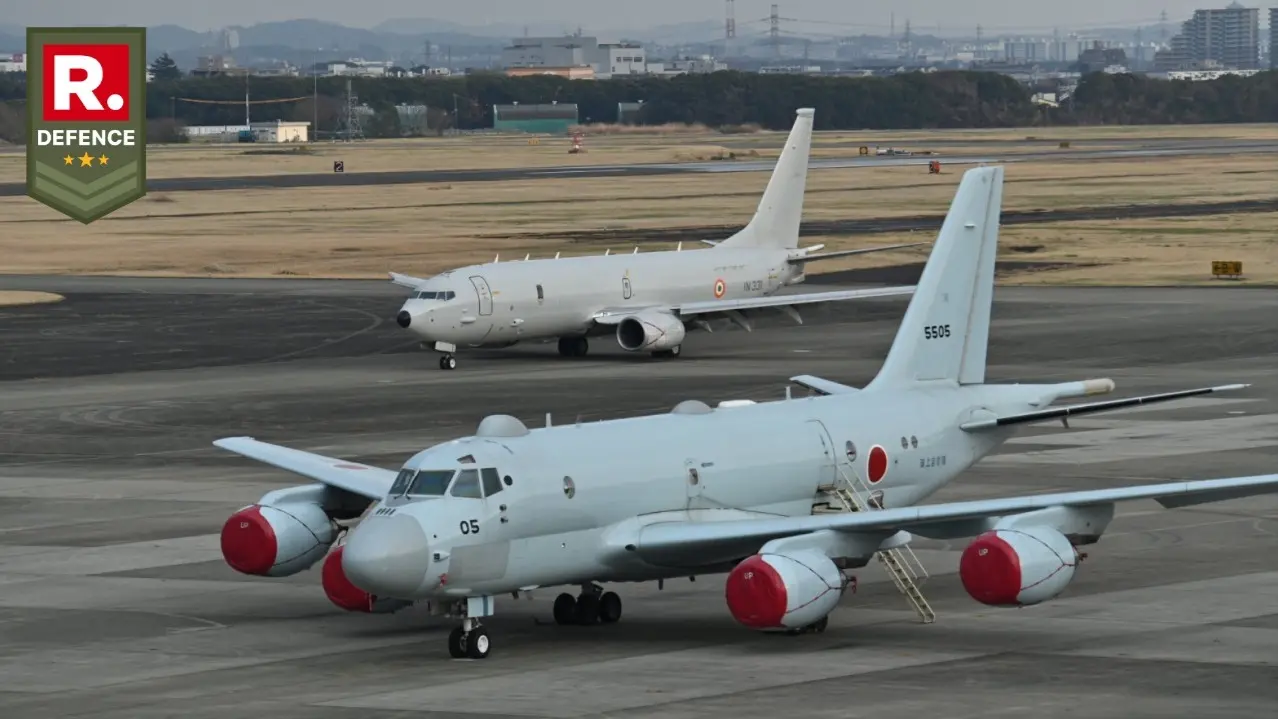Updated 31 March 2025 at 18:40 IST
Italy Considers Japan’s Kawasaki P-1 for Anti-Submarine Warfare in the Mediterranean
The P-1, designed specifically for maritime patrol, features four engines, advanced sensors, and superior endurance for anti-submarine operations.
- Defence News
- 4 min read

Rome, Italy - Italy is seriously considering Japan’s Kawasaki P-1 maritime patrol aircraft to strengthen its anti-submarine warfare capabilities in the Mediterranean. If Rome goes ahead with the deal, it would mark a major departure from its long-standing reliance on U.S. aircraft and signal a growing defence partnership with Tokyo. Italian Air Force Chief Luca Goretti confirmed on Friday that the P-1 is “one of the possible options,” highlighting how Italy is reassessing its procurement strategy at a time of rising naval tensions.
For decades, Italy has leaned heavily on American defence manufacturers, acquiring B767 tankers, C-130 transports, Gulfstream sensor aircraft, MQ-9 Reaper drones, and F-35 stealth fighters. The natural expectation was that Italy would follow NATO allies like the U.K. and Germany in opting for Boeing’s P-8 Poseidon as its next maritime patrol aircraft. But now, the Japanese P-1 has emerged as a contender, bringing with it the possibility of a deeper strategic alignment between Rome and Tokyo.
P-1: An Unconventional but Capable Choice
Designed from the ground up as a maritime patrol aircraft, the P-1 boasts four engines, cutting-edge sensors, and high-end electronic warfare capabilities. It has been in service with Japan’s Maritime Self-Defense Force since 2013, but so far, Tokyo has struggled to find an export buyer. That could change if Italy decides to go with the P-1 instead of the P-8, offering Japan its first international customer for the aircraft.
Italy has been trying to fill a glaring gap in its maritime patrol capabilities since 2017 when it retired its last fleet of Breguet Atlantiques. The replacement, the ATR 72 aircraft co-produced by Airbus and Leonardo, has been seen as a temporary stopgap. While they offer modern radar and surveillance systems, they lack anti-submarine warfare capabilities—something Italy desperately needs as the Mediterranean becomes increasingly contested by friendly and adversarial navies alike.
Advertisement

The P-1 offers endurance and dedicated anti-submarine capabilities, making it an attractive option. But there are challenges. The P-8 Poseidon is the standard maritime patrol aircraft among NATO allies, making logistics, interoperability, and joint operations seamless. Opting for the P-1 would mean Italy has to navigate a new supply chain and potentially face compatibility issues with its partners.
Growing Italy-Japan Defense Ties
The interest in the P-1 isn’t happening in a vacuum. Italy and Japan have been strengthening defence ties, particularly through their partnership with the U.K. in the Global Combat Air Program (GCAP), a sixth-generation fighter jet initiative. That collaboration has already opened doors for more discussions between Rome and Tokyo about additional defence deals.
Advertisement
Speaking before the Italian Parliament on March 13, Air Force Chief Goretti suggested that the GCAP project was laying the groundwork for even more military cooperation. “Right now, there is an Italian delegation in Japan because there are other chances for growth with (Japan), including the development of a trainer for them as well as a joint patrol aircraft,” he said. His comments hinted at the possibility of a defence trade-off: Italy buys the P-1, and Japan considers Italy’s M-346 jet trainer to replace its ageing Kawasaki T-4s.

This kind of deal wouldn’t be new for Italy. Back in 2012, Rome secured a sale of its M-346 trainer to Israel by agreeing to buy Israeli surveillance satellites and Gulfstream sensor aircraft. If a similar arrangement plays out with Japan, it would strengthen ties between two nations already working together on next-generation military technology.
A Strategic Shift in Italy’s Procurement Approach
If Italy chooses the P-1, it could signal a broader shift in its military procurement philosophy. For years, Italy has been one of America’s most loyal customers when it comes to defence acquisitions. Opting for a Japanese aircraft over an American one would be a clear sign that Rome is diversifying its defence relationships beyond Washington.
That doesn’t mean Italy is moving away from NATO or U.S. military ties—far from it. However, with growing European interest in Indigenous defence projects and increasing collaboration with non-traditional partners like Japan, the decision to explore the P-1 could set a precedent for future procurement deals.
Watch- US, Japan & Philippines Conduct Joint Naval Drills In South China Sea, China Vows To Take Action
Published By : Yuvraj Tyagi
Published On: 31 March 2025 at 18:40 IST
